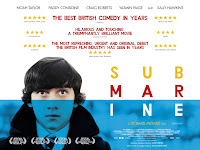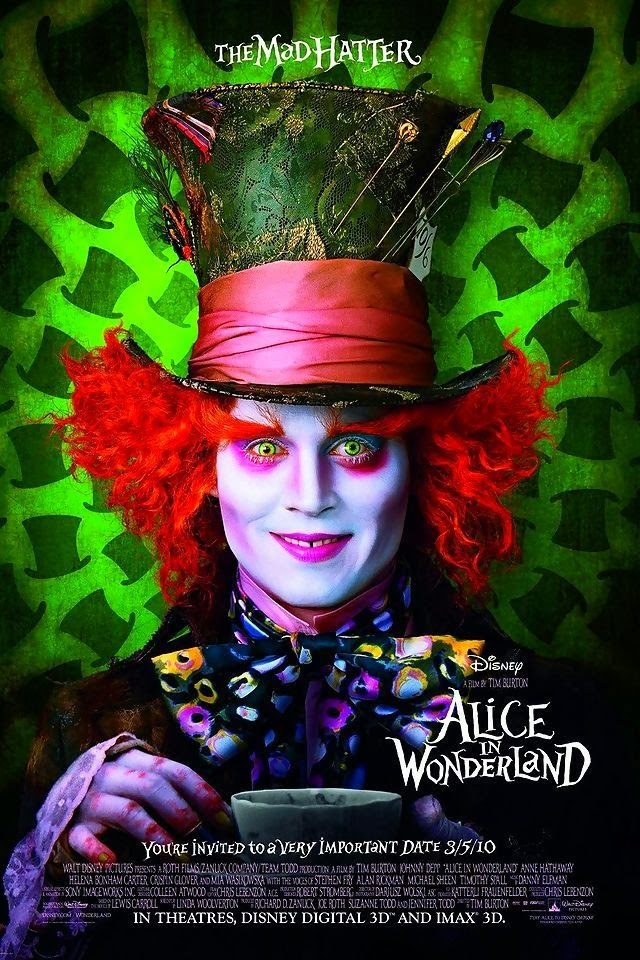Monster in the House
A 'monster in the house' type film plot consists of literally a 'monster' (something which the protagonists must escape from) and a 'house' (a confined area in which the whole story takes place). The characters are usually threatened in some way by the monster, meaning they have to kill it, or hide from it throughout the film. A 'sin' is also usually created, which provokes the monster in some way (for example, in
Jurassic Park, the greed of the park owners led to the creation of the dinosaurs, which, by nature, are a danger to the human characters). There are many famous examples of this genre such as
Alien,
Jaws and
The Exorcist, but a more recent examples would be the
Paranormal Activity films (the fourth recently released in October 2012), where the ghosts terrorize the families from within their own homes.
Golden Fleece
This genre is named after the myth of Jason and the Argonauts and his quest for the golden fleece - in these films, the hero goes 'on the road' searching for something, but usually discovers more than that - they 'discover themselves'. Older examples include The Wizard of Oz and even Star Wars, however newer films in this genre could be The Hobbit: An Unexpected Journey, released in December 2012.
Out of the Bottle
In this genre of film, the plot usually follows the structure that the hero of the story is almost similar to that of Cinderella - the audience wants the hero to find happiness, however, in the end the character must learn that the 'magic' that caused his happiness isn't everything and that is better to be like us (the members of the audience). A good moral is normally included at the end. Older 'out of the bottle' style films include Bruce Almighty and Liar, Liar.
Dude with a Problem
These type of films start off with an average man who finds himself in 'extraordinary circumstances', whether it be rescuing his wife from bad guys, or rescuing a huge group of people from a natural disaster. Most of the time, the main character has to overcome a personal issue to conquer the bad guys and triumphs over evil. Examples include things like Die Hard and even Schindler's List and Titanic, but more recent examples could be Taken (2008) and Taken 2 released in October 2012.
Rites of Passage
Films in the genre Rites of Passage are basically about the changes and transitions in life such as going through puberty or a mid-life crisis. Usually the transition presents a problem (such as old age, grievances or a romantic break-up) that the main character must battle, almost like an unseen monster. The experiences or circumstances that the characters find themselves in tend to be very relatable, which means that many of the audience will have actually gone through similar experiences themselves. They tend to be either dramas or comedies, with examples including films like Napoleon Dynamite, Bridesmaids, Submarine (directed by Richard Ayoade, released in 2010) and more recently Moonrise Kingdom (directed by Wes Anderson, released in May 2012).
Buddy Love
Buddy Love films are typically centred around 2 characters and the problems they face together. These problems usually bring them closer together and they realise that they can't live as well without each other. These films are not just about 'buddy' love, they also include romantic love such as in the Twilight Saga (which spanned over the years 2008 - 2012, the most recent film Breaking Dawn: Part 2 released in November 2012) and even love including animals, pets or even fantasy creatures such as Free Willy, E.T and even Paul (released in March 2011).
Whydunit
In these films, the focus of the story is more why the bad guy committed the evil deed instead of who did it - it is not about the characters discovering themselves, it' about the audience discovering the evil reason why the bad guy did his evil doing (the audience are almost like the detectives). There are many extremely famous 'Whydunit' type films such as Blade Runner, Seven, The Silence of the Lambs, and The Sixth Sense.
The Fool Triumphant
In these type of films, the main character is usually an underdog who other characters see as so unequipped for life that they discard his chances of success (this doubt extends to the audience too). Throughout the film, we see the character seems to grow in his ability to succeed, and by the end of the film, despite the odds against them, they triumph at their goals. Some examples include Forrest Gump, School of Rock, Elf .
Institutionalised
Films under this genre always contains a group of characters (for example a family unit or a group of colleagues), and the story usually unfolds to either honour the institution or present the problems of being lost when being a part of it. The pros and cons of putting the group ahead of ourselves are also developed throughout the film. One Flew Over The Cuckoo's Nest is a very famous institutionalised film, as well as The Godfather films and The Shawshank Redemption. Even Disney's Pocahontas and Avatar come under this genre.
Superhero
This genre is actually the direct opposite of the 'Dude with a Problem' genre - an extraordinary person finds themselves in an ordinary world. It usually means that the audience has sympathy for this character, for they are usually misunderstood. The character has to deal with those who are jealous of his abilities, and those who do not understand his mind or his point of view. The point of identification from the audience can usually only come from them sympathising for him for being misunderstood - the audience normally never fully understand the main character. The obvious films under this genre are the typical marvel heroes such as Batman and Spider man, films such as Dracula and Frankenstein, but also films like Gladiator and the X-men series ( a new film in the series, The Wolverine, is set for release in cinemas later this year in July).














